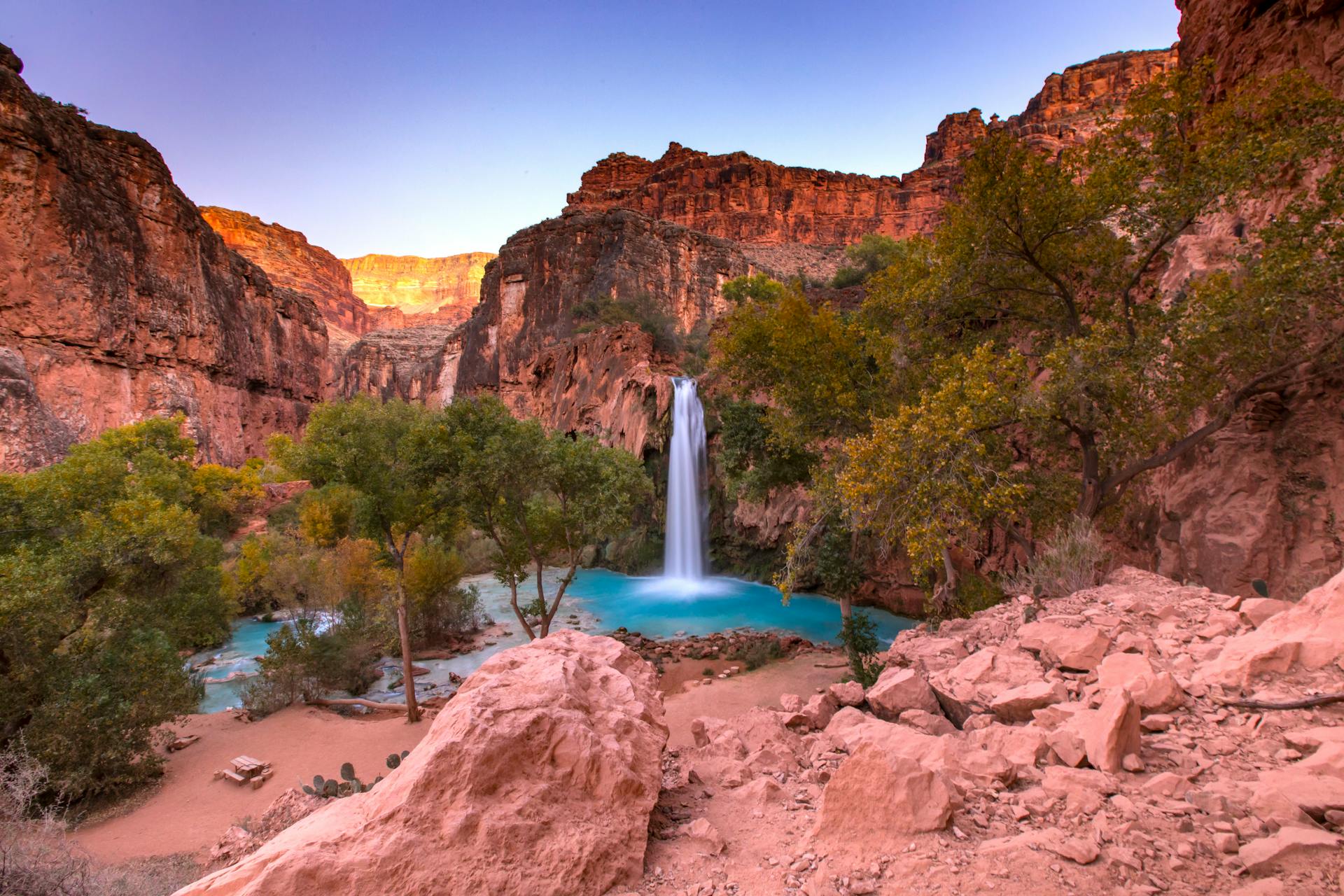Embarking on a hiking and camping journey to the majestic Havasupai Falls is not only a physical challenge but also a deeply rewarding experience. Surrounded by vibrant turquoise waters and breathtaking landscapes, this remote oasis in the Grand Canyon offers some of the most iconic views and pristine natural beauty on the planet. Whether you’re planning to camp near the falls or explore the surrounding trails, every moment at Havasupai is filled with magic. But as with any outdoor adventure, preparation is key to ensuring a smooth and enjoyable trip.
This comprehensive guide will help you pack efficiently, stay safe, and have the best possible time exploring this incredible destination.
Why Packing Light is Essential
Before we dive into the specifics of your packing list, it’s crucial to understand why packing light is so important. The 10-mile trek to Havasupai Falls and the 10-mile hike back out require stamina, and the weight of your pack can significantly impact your energy levels. Carrying a heavy load could quickly wear you down, reducing your ability to enjoy the adventure.
The Golden Rule of Backpacking: Your pack should weigh about 20% of your body weight. For instance, if you weigh 150 pounds, aim for a pack that’s about 30 pounds or lighter. Every ounce matters on the trail, so consider cutting unnecessary items from your list and prioritize multi-use gear.
Test Your Gear Ahead of Time
No matter how good your gear looks or how well-reviewed it is, testing everything before hitting the trail is essential. There’s nothing worse than discovering a broken tent pole or uncomfortable backpack halfway through your hike. Take the time to set up your tent and sleeping system at home, get familiar with your cooking system, and make sure your boots are broken in.
This can be a real game-changer: knowing exactly how to set up your tent and pack your backpack will save you time and energy when you’re in the field. Additionally, this gives you the opportunity to resolve any issues before you’re miles away from the nearest store or help.
Repacking and Resale Options
Havasupai is a remote location, and the weight of your gear is critical. Consider repackaging bulky items like food into smaller, more lightweight containers. Ziplock bags or vacuum-sealed bags can make a huge difference in saving space and keeping things organized.
Additionally, outdoor gear can be costly. To save some money without compromising quality, look into resale options. Websites like Facebook Marketplace or REI’s Garage Sale offer great deals on lightly used gear that can still be in excellent condition.
Your Complete Havasupai Packing List
Now that we’ve laid the groundwork, here’s an in-depth packing list to ensure you have everything you need to thrive on your Havasupai adventure.
1. Sleeping System: Your Foundation for Rest
A restful night’s sleep is essential for recharging during your adventure. Keep these items in mind when packing for your rest:
- Tent: Choose a lightweight, durable tent that is easy to set up and can withstand desert conditions. Consider a two-person tent, even if you’re solo—this provides more space for your gear.
- Sleeping Bag: The desert temperatures can drop significantly at night, so pack a sleeping bag that’s rated for cooler temperatures, ideally around 20°F lower than expected.
- Sleeping Pad: A sleeping pad is crucial for insulation and comfort. Inflatable pads are lighter and more comfortable, while foam pads are slightly bulkier but more durable.
- Pillow: While optional, a travel pillow or a stuff sack filled with clothes can make a huge difference for a good night’s sleep.
2. Hiking and Camping Gear
Your journey to Havasupai Falls will test your endurance, so having the right gear is crucial to ensure a smooth experience:
- Backpack: A pack in the 50-80 liter range is ideal. It should have good straps, a waist belt, and a solid frame for comfort. Avoid cramming in too much gear to keep it light.
- Trekking Poles: These provide stability on both the descent and ascent, especially on rocky or slippery terrain.
- Water Reservoir & Filter: Hydration is key in the desert. A water reservoir (like a Camelbak) is easy to refill at the campground. Bring a filter for safe, clean water from streams along the trail.
- First Aid Kit: Always be prepared. Pack bandages, antiseptic wipes, blister care, pain relievers, and any prescription medications you may need.
- Jetboil & Fuel: A compact cooking system like a Jetboil will make boiling water for meals or drinks quick and efficient.
- Food Storage Container: Bears and rodents are a real concern in remote areas. Use a bear canister or rodent-proof bags to store food safely.
- Headlamps & Lanterns: Bring a reliable headlamp for nighttime visibility. A lantern can help light up your campsite during dark nights in the canyon.
3. Apparel: Dress for the Terrain
Pack light but functional clothing to handle everything from hot days to cool evenings:
- Hiking Boots: Choose boots that are broken in, provide ankle support, and have good traction for rocky terrain.
- Water Shoes: Light and durable water shoes are essential for crossing streams and relaxing by the falls.
- Base Layers: Moisture-wicking fabrics will help you stay dry and comfortable during your hikes.
- Rain Jacket & Lightweight Jacket: Even though the desert is often dry, sudden rainstorms can occur. Pack a lightweight rain jacket that folds up small, as well as a warm layer for chilly mornings and evenings.
- Hat & Swimsuit: A wide-brimmed hat will help shield you from the sun, and a swimsuit is a must for a refreshing dip in the falls.
4. Food and Snacks
Fueling your body is essential during the trek, so plan ahead for lightweight, nutritious meals and snacks:
- Freeze-Dried Meals: These meals are easy to prepare and pack, requiring only boiling water. They offer a wide range of options to suit all tastes.
- Snacks: Trail mix, granola bars, jerky, and energy bars are perfect for keeping your energy levels up throughout the day.
- Electrolytes: Consider bringing electrolyte tablets or powder to add to your water and stay hydrated during the hike.
5. Toiletries and Personal Care
Even when roughing it in the wilderness, maintaining hygiene is important:
- Sunscreen & Chapstick: The sun can be relentless, so protect your skin with broad-spectrum SPF 30+ sunscreen and moisturizing chapstick to prevent sunburns.
- Bug Spray: Insect repellent with DEET or natural alternatives will keep bugs at bay—essential for any outdoor adventure.
- Toothbrush & Toothpaste: Opt for biodegradable toothpaste and a lightweight toothbrush to maintain dental hygiene.
- Chafing Ointment: Chafing is a common issue on long hikes, especially in warmer temperatures. Keep this in your pack for relief.
6. Miscellaneous Items
Don’t forget these small but important items:
- Utility Cord: A piece of utility cord can help you hang wet clothes, food, or gear out of reach of animals.
- Quick-Dry Towel: A compact towel is essential for drying off after swimming or showering.
- Camera or Smartphone: Capture the beauty of Havasupai Falls, but be sure to have a portable charger or extra battery if you plan to use your phone for photos.
7. Final Tips for a Smooth Havasupai Experience
- Extra Socks: Your feet will thank you when you have extra socks to change into after a long day of hiking.
- Packing Efficiency: Keep your pack light but ensure you have all the essentials. It’s better to have a bit more than not enough.
- Familiarize Yourself with Gear: Test everything out beforehand to avoid any surprises on the trail.
- Prepare for the Unexpected: Desert temperatures can fluctuate quickly. Be ready for anything by packing for both heat and cold.
By following this detailed packing guide and preparing for the unexpected, you’ll be set for an unforgettable adventure to Havasupai Falls. The beauty of this remote oasis is unlike any other, and being prepared ensures you can enjoy it to its fullest.
Happy hiking!

